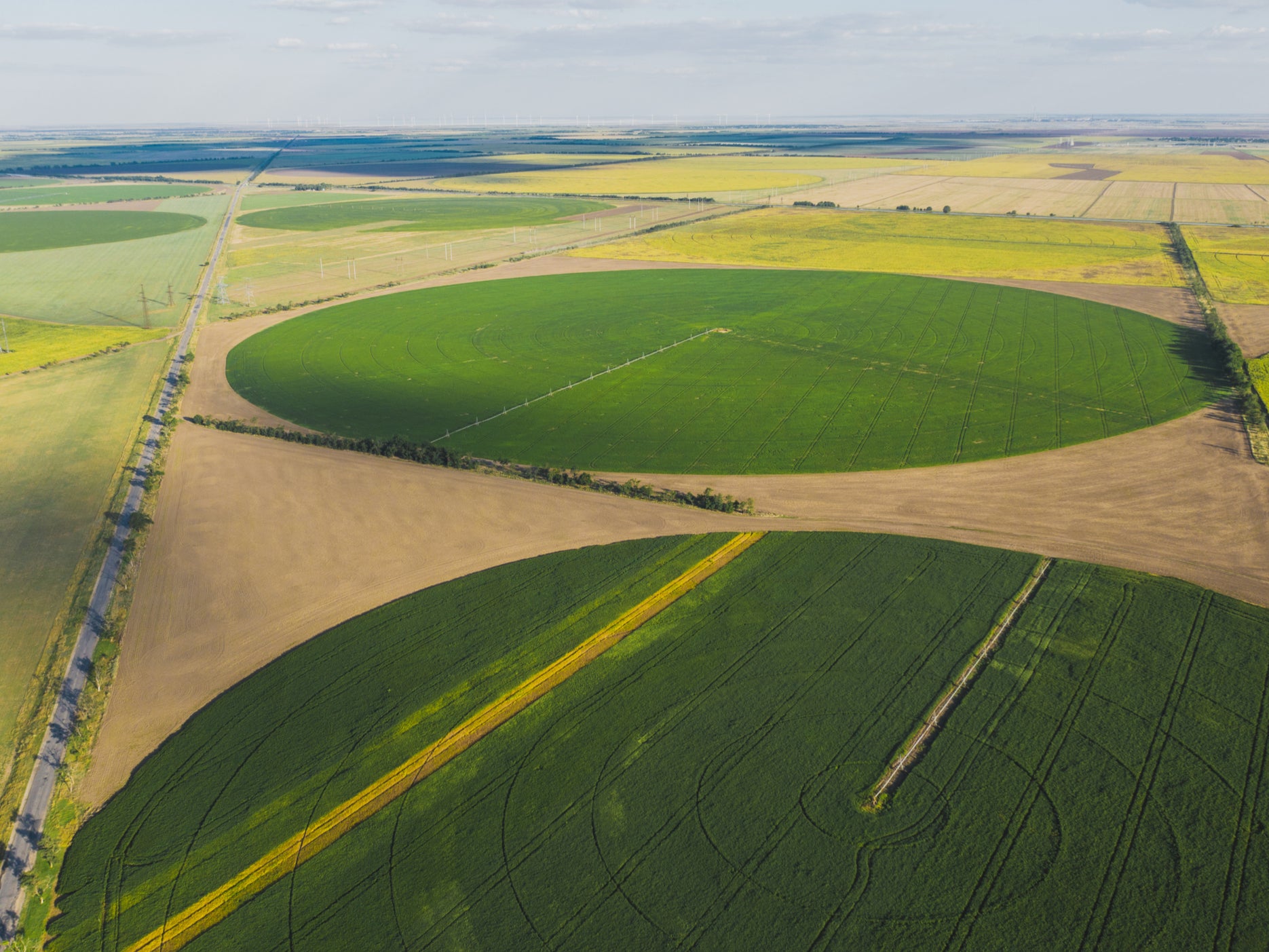Intensive high-yield farms could leave greater space for rewilding and biodiversity, study says
A decade-long study finds ‘land sparing’ is more effective than pursuing wildlife-friendly agriculture, as Harry Cockburn explains


Farmers are under increasing pressure to allow greater levels of biodiversity on their land, but new research suggests that a better approach may instead be to concentrate high-yield farms within smaller areas, allowing “much more” land to be rewilded while still meeting future food targets.
Based on over a decade of research by academics at the University of Cambridge, the study suggests most species would fare better under a “land sparing” approach, than if farmers try to share land with nature.
“Wildlife-friendly agriculture still damages most biodiversity and requires far more land to produce the same amount of food,” the researchers said.
Lead by Andrew Balmford, a professor of conservation science at Cambridge, the team assessed over 2,500 individual plant, insect and vertebrate species from five continents, and also found their approach would also result in the sequestration of greater amounts of carbon – helping to tackle the climate crisis – and could benefit marine life if similar techniques were applied to oceans.
“Figuring out how to feed, clothe and power 11 billion people without causing mass species extinction and wrecking the climate is this century’s greatest challenge,” Professor Balmford said.
“Preserving diverse life while meeting humanity’s needs will mean enormous trade-offs, but the evidence is starting to point in one direction.”
The research lays out the case for securing the highest levels of production we can from land – and water – already farmed, in order to spare remaining wilderness from “cows, ploughs, chainsaws and trawler nets”.
“Most species fare much better if habitats are left intact, which means reducing the space needed for farming. So areas that are farmed need to be as productive as we can possibly make them,” Professor Balmford said.
The researchers noted that some farm animals thrive on traditional farmland, particularly in Europe, where light grazing by livestock can imitate “disturbance” once caused by large prehistoric mammals, and creating habitats for many species that otherwise struggle.
This means some low-yield farming should be factored in, though on a small scale, the researchers said.
The UK Government-commissioned National Food Strategy (NFS), published in the summer, has already recommended Professor Balmford’s “three-compartment” model – harnessing high-yield farming in order to leave space for many more protected habitats, with pockets of traditional agriculture to preserve farmland-associated species – should form the basis of a new “Rural Land Use framework”.
The NFS highlights that around 21 per cent of farmed land in England will need to be rewilded to some extent or used for biofuel if the UK is to meet its net zero targets, and also notes that the entire bottom third of farmed land produces just 15 per cent of English agricultural output.
Professor Balmford’s latest research summarises a decade of global research on trade-offs between crop production and biodiversity.
This includes Cambridge-led studies on bird and tree species in India and West Africa, finding that – while all species are “losers” if mid-century food targets are met – more species “fare least badly” under extreme land sparing, where concentrated farming leaves greater space for more natural habitat.
“Colleagues have replicated these findings in field sites ranging from Mexico and the Pampas to Colombia and Kazakhstan,” said Professor Balmford.
“Most species are specialised to particular environments. Even minor disruptions reduce their populations. This is why so many species decline even with gentler farming.”
The research suggests that retaining existing wild landscapes and increasing habitats to create patchworks of nature alongside high-yield farming areas will not just preserve species in isolated areas but allow them to “seed” and repopulate entire regions and nations.
The research team highlighted the success of just four square kilometres of restored wetland near Lakenheath in the east of England. Covered with carrot fields as recently as 1995, the site is now a “launchpad” for egrets which are spreading northwards due to the climate crisis, and is also home to the first breeding cranes seen in The Fens for over 300 years.
As well as increasing biodiversity, the “land sparing” technique could help tackle the climate crisis, as carbon storage levels would be higher if high-yield production allowed for more natural vegetation to return elsewhere.
Previous research by Professor Balmford suggests that if 30 per cent of UK land was spared for woods and wetlands, it could store enough carbon to offset almost all emissions from UK farming by 2050 – and would also provide “a colossal boost to British wildlife”.
But he also warned that support for concentrating farming into smaller areas and leaving other land to be rewilded was “not a whole-hearted endorsement of industrial production”.
He said that driving up farm yields also means supporting smallholder farmers and adopting nature-based agricultural science.
He also said that if his vision is to gain ground, then public pressure on business and government to commit to sparing land for nature “will be vital”.
“You can’t convince people to save nature if they are hungry. We need to ensure we can harvest enough from the biosphere while preserving the planet,” said Professor Balmford.
“Conservation has to be pragmatic if we are to interrupt an ecological catastrophe.”
The research is published in the Journal of Zoology.






Join our commenting forum
Join thought-provoking conversations, follow other Independent readers and see their replies
Comments